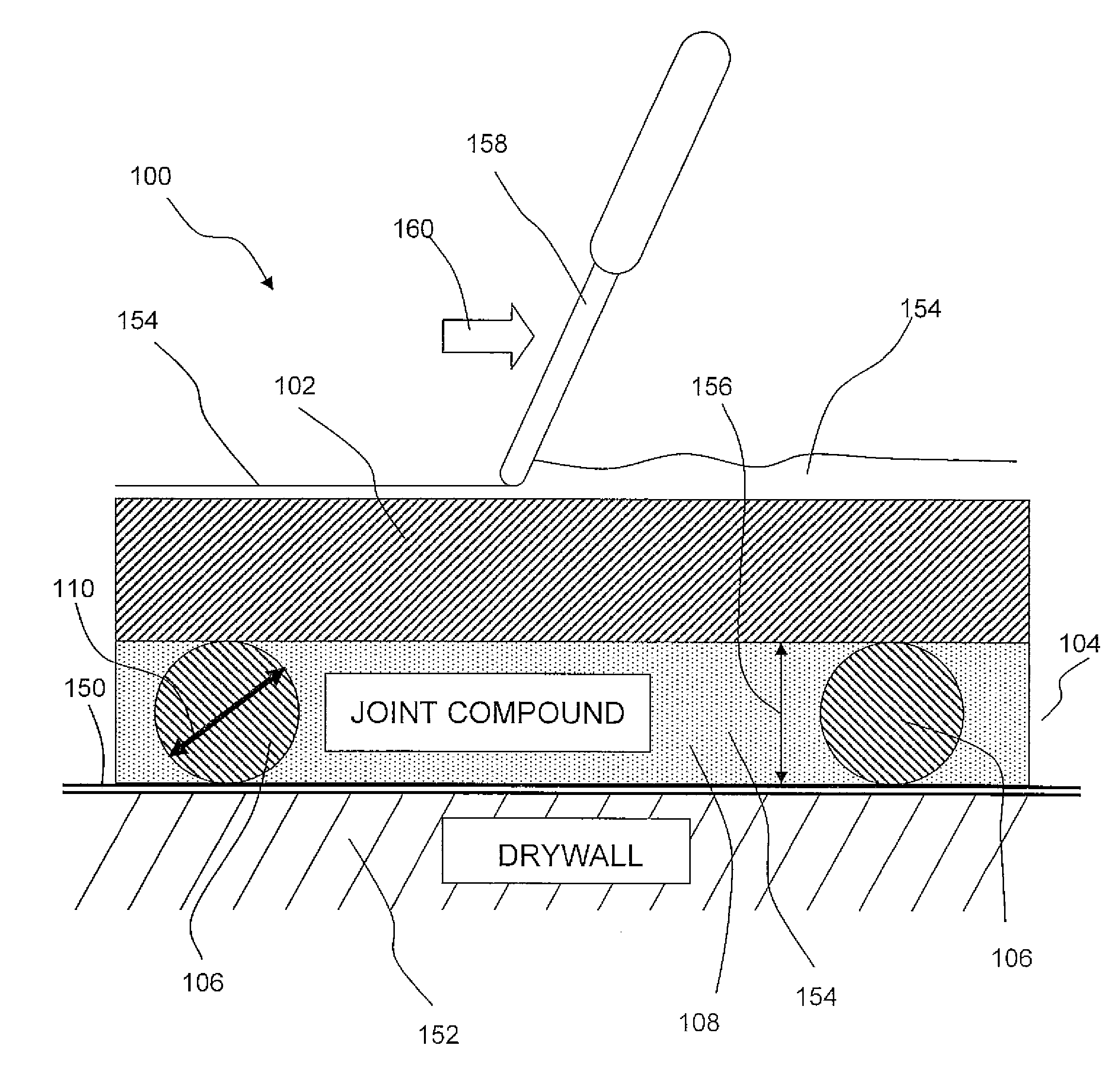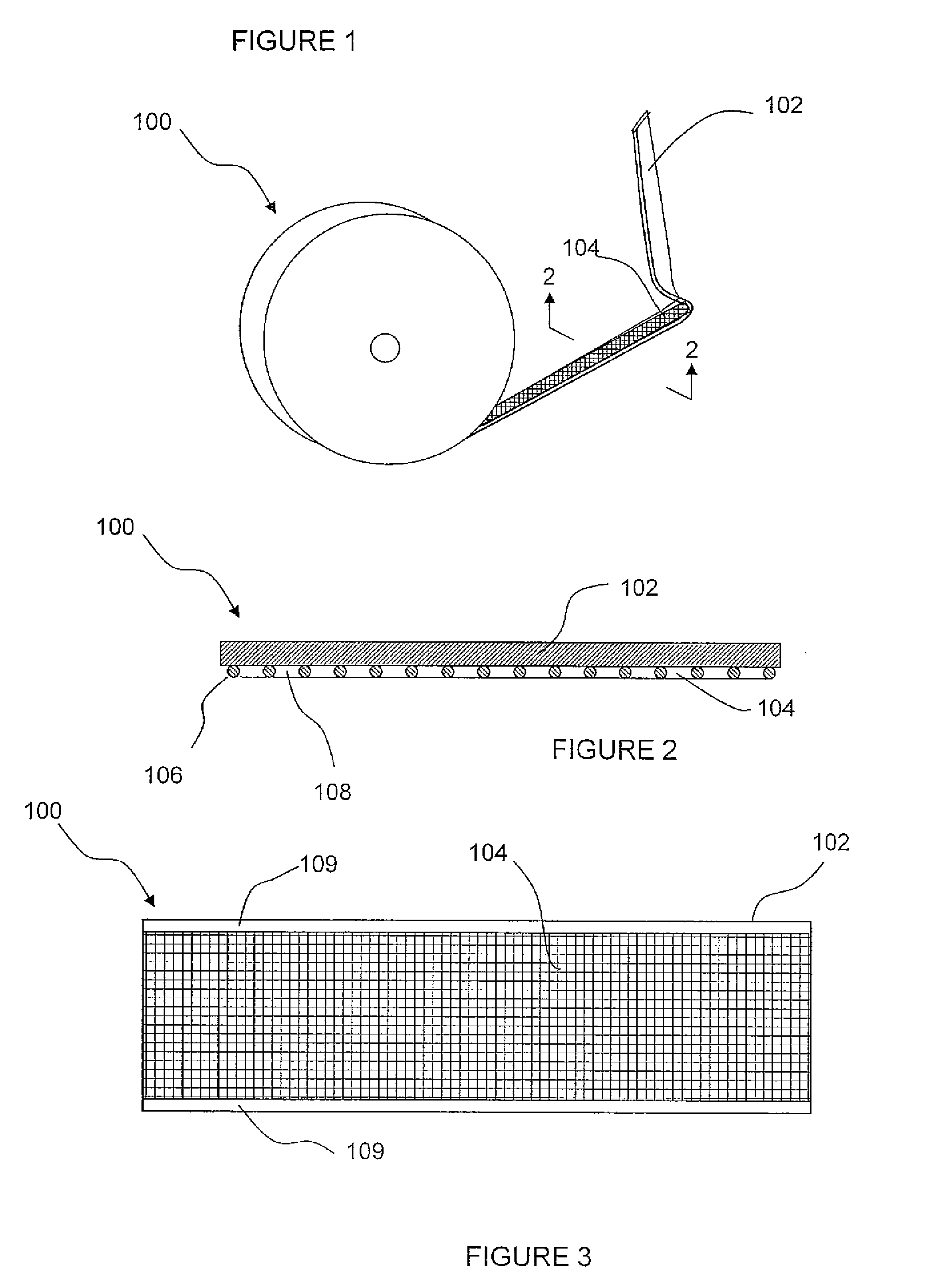Drywall sealing tape
- Summary
- Abstract
- Description
- Claims
- Application Information
AI Technical Summary
Benefits of technology
Problems solved by technology
Method used
Image
Examples
Embodiment Construction
[0031]Referring initially to FIG. 1, a perspective view of the drywall sealing tape of the present invention is shown and generally designated by reference numeral 100. Drywall sealing tape 100 is depicted in roll-form, and ready for application to drywall panels for sealing joints between the panels, and for covering defects.
[0032]A more detailed view of the drywall sealing tape of the present invention is shown in section in FIG. 2. From this view, the drywall sealing tape is shown to have substrate layer 102 and mesh layer 104, attached together to form a unitary sealing tape.
[0033]Substrate layer 102, in a preferred embodiment, may be a paper tape, such as the paper joint sealing tape previously used in the industry. Alternatively, substrate layer 102 may be a synthetic material having a characteristic of bonding securely to joint compound, while exhibiting the flexible qualities needed for application to sealing joints in drywall panels. Substrate layer 102 may be coated with a...
PUM
| Property | Measurement | Unit |
|---|---|---|
| Length | aaaaa | aaaaa |
| Length | aaaaa | aaaaa |
| Length | aaaaa | aaaaa |
Abstract
Description
Claims
Application Information
 Login to View More
Login to View More - R&D
- Intellectual Property
- Life Sciences
- Materials
- Tech Scout
- Unparalleled Data Quality
- Higher Quality Content
- 60% Fewer Hallucinations
Browse by: Latest US Patents, China's latest patents, Technical Efficacy Thesaurus, Application Domain, Technology Topic, Popular Technical Reports.
© 2025 PatSnap. All rights reserved.Legal|Privacy policy|Modern Slavery Act Transparency Statement|Sitemap|About US| Contact US: help@patsnap.com



